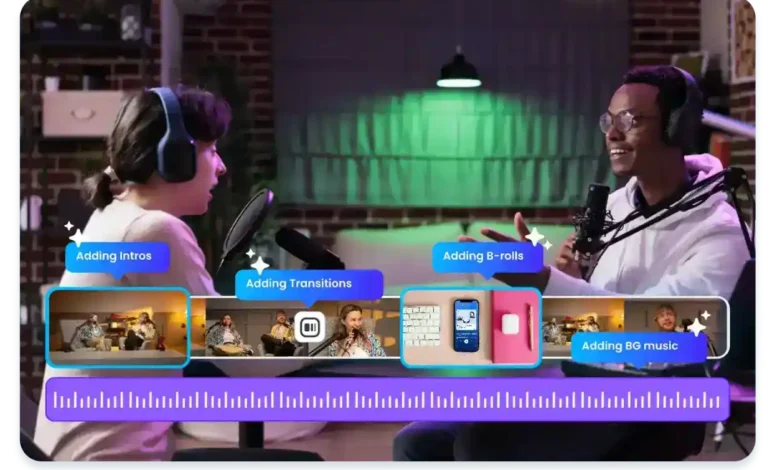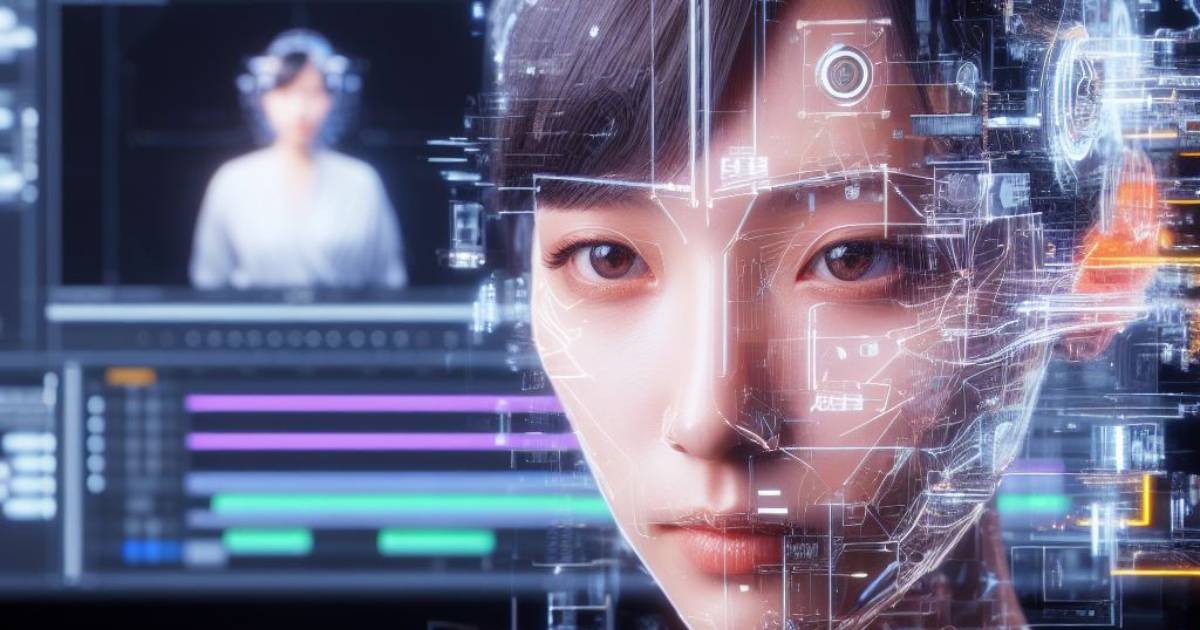AI Video Editor – The Future of Seamless Video Creation

Introduction: Why AI Video Editors Are Taking Over
AI Video Editor the world of video editing has changed dramatically in just a few years. What once required hours of manual trimming, layering, and rendering can now be achieved in minutes with artificial intelligence. AI video editors have moved from being a tech novelty to a real tool that both professionals and beginners rely on daily. They are faster, smarter, and often more intuitive than traditional software.
The rise of platforms like TikTok, YouTube, and Instagram has only accelerated the demand for quick, high-quality video production. People don’t just want videos; they want polished content that looks professional without spending a fortune on editing services. AI fills this gap by automating tasks, offering pre-designed templates, and even suggesting improvements in style, transitions, or pacing.
What makes AI video editors so compelling is their accessibility. You don’t need years of editing experience to create a cinematic clip anymore. Whether you are a brand looking to boost marketing, a creator building an audience, or a student experimenting with digital projects, AI makes the process smoother, faster, and—most importantly—less intimidating.
How AI Video Editors Actually Work

At the core of every AI video editor is machine learning and computer vision. These tools allow the software to recognize scenes, detect objects, analyze audio, and even interpret emotions or moods. For example, an AI editor can automatically highlight the best moments from a long recording by analyzing motion, speech clarity, or facial expressions.
Many AI editors also use natural language processing (NLP). This means you can type a command like “Make a 30-second highlight reel from this footage” or “Add upbeat background music” and the editor does the rest. This human-like interaction lowers the learning curve and makes editing more conversational rather than technical.
On the technical side, AI video editors rely on algorithms that identify patterns in media. For instance, they can match a soundtrack to the beat of transitions, detect filler words in dialogue, or stabilize shaky footage without manual adjustments. Over time, as you use the tool, it even learns your editing style—be it fast-paced cuts for gaming content or slow, cinematic fades for travel vlogs.
Key Features of AI Video Editors
One of the most exciting things about AI video editors is their features. These go beyond trimming and splicing; they enhance creativity and efficiency in ways traditional editors cannot.
- Automatic Editing: AI can take raw footage and create a ready-to-share video in minutes. It cuts unnecessary parts, arranges clips, and adds smooth transitions without manual input. This is particularly useful for vloggers or businesses that need quick turnaround times.
- AI-Powered Enhancements: Features like color correction, noise reduction, and audio leveling are usually tedious to adjust manually. AI does them automatically, ensuring the final product looks polished. Some tools even recognize faces and adjust lighting to make subjects stand out.
- Voice and Caption Automation: Many AI editors transcribe audio in real-time, turning it into captions instantly. This is a huge benefit for accessibility and for platforms where captions increase engagement. Similarly, AI can generate voiceovers in multiple languages, making content global-ready.
These features aren’t gimmicks—they solve real problems that editors have struggled with for years. Instead of spending hours tweaking technical details, users can now focus more on creativity and storytelling.
Benefits for Content Creators and Businesses
For creators, the biggest advantage of AI video editors is time savings. Editing a 10-minute video manually can take hours, sometimes days, especially if you’re aiming for professional quality. AI cuts that time drastically, enabling faster uploads and more consistent content production.
Businesses benefit in a similar way but at a larger scale. Marketing teams no longer need to hire expensive editing agencies for every social media campaign. With AI, even small businesses can produce content that rivals big brands. This levels the playing field in digital marketing, where attention spans are short, and quality content must be delivered quickly.
Another benefit is cost efficiency. Subscription-based AI tools are often far cheaper than traditional editing suites or hiring professional editors. For startups and freelancers, this makes AI an attractive solution. Plus, the AI’s ability to generate multiple variations of the same video allows businesses to test different strategies without extra effort.
Challenges and Limitations of AI Video Editors
While AI video editors are powerful, they aren’t perfect. The biggest limitation is creativity. AI can automate and replicate existing styles, but it doesn’t yet fully understand unique artistic visions. If you’re aiming for a very niche, experimental edit, AI might not capture the exact mood you’re going for.
Another issue is over-reliance. Because AI makes editing so easy, some creators may settle for generic results rather than pushing for originality. This could lead to a flood of similar-looking content across platforms, reducing individuality.
There are also technical concerns. AI video editors need strong computing power and internet connectivity, especially cloud-based tools. Large file processing may be slower for users with limited hardware or unstable internet. Additionally, privacy becomes a concern when uploading personal footage to AI platforms. Ensuring that data isn’t misused is a challenge both users and providers must address.
AI Video Editors vs. Traditional Editing Software
The debate between AI editors and traditional software often comes down to speed versus control. Traditional software like Adobe Premiere Pro or Final Cut Pro gives users complete control over every frame, effect, and transition. Professionals who want precision will still prefer these tools.
AI video editors, on the other hand, prioritize speed and accessibility. They remove the steep learning curve and allow anyone to produce polished videos without technical know-how. For businesses and casual creators, this is often more valuable than precision editing.
In practice, many professionals use AI as a complement rather than a replacement. For instance, AI can handle rough cuts, captions, or color grading, while a human editor refines the creative details. This hybrid workflow is becoming increasingly popular, allowing the best of both worlds.
The Future of AI in Video Editing
Looking ahead, AI video editors will only get smarter. We can expect more personalized editing recommendations based on individual style preferences. Instead of generic templates, AI will learn to suggest edits that align with your unique aesthetic.
Integration with virtual reality (VR) and augmented reality (AR) will likely be the next frontier. Imagine editing immersive 360° videos with the help of AI, where it automatically optimizes viewer focus and perspective. AI could also expand into predictive editing, where it anticipates what type of content performs best for your audience and structures videos accordingly.
Another exciting area is collaboration. AI video editors may soon allow teams to work together in real-time across different devices, automatically syncing edits, captions, and effects. This would make remote video production smoother and more efficient.
Conclusion: Should You Use an AI Video Editor?
AI video editors are no longer just a tech experiment—they’re practical, accessible tools that are reshaping how we create and share content. Whether you’re a business owner, a YouTuber, or someone editing family footage, AI can save you time, cut costs, and boost your content quality.
While they won’t fully replace human creativity anytime soon, they are excellent companions in the editing process. Think of them as digital assistants that handle the repetitive, time-consuming tasks so you can focus on what really matters: telling your story.
The future of video editing is clear—AI will continue to play a major role, making high-quality content creation possible for everyone. For anyone serious about producing engaging videos in today’s fast-paced digital world, embracing AI video editors isn’t just smart; it’s inevitable.